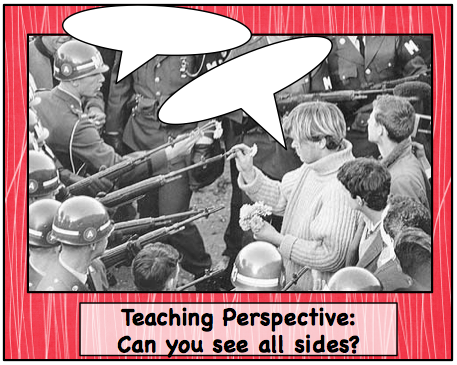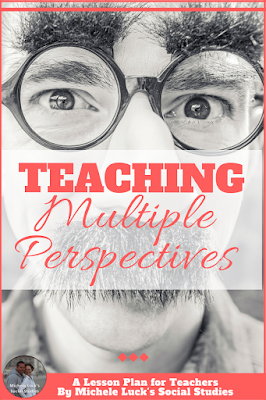
First and foremost, stress to your students from the very start of each lesson that there are many sides to every event. The Cold War was not controlled completely by the US, nor was it controlled by the U.S.S.R.. Even the two superpowers had quite a bit of help in feeding and fueling the fires between democracy and communism. And if we cannot clearly define events between world powers, how can we begin to touch the surface of interactions between individuals?
One strategy for teaching multiple perspectives is to utilize as many primary sources as possible in every lesson you teach. Provide students the first hand accounts, and encourage them to analyze the information to come to their own conclusions about the events in question.
Next, practice perspective posting on every assignment by adding comment bubbles. Have students add in the conversation between key players. Discuss their comments, and evaluate the plausibility of the comments based on what is known of the historical events. An additional step to this activity would be including a 3rd bubble and allowing students to include an outside viewpoint. Teach them to ask about those who are not seen or heard in history. (These are great Interactive Notebook wrap-up activities!)

Finally, set up and encourage role playing in your classroom. Remind students that they will never be able to truly walk in another’s shoes, but through reenacting historic events or imagining the thoughts and feelings of individuals of that time period, they can get a better idea of the era.

And when students find themselves unable to find multiple perspectives in history, remind them of the Blind Men and the Elephant. The poem, told in many different versions (how fitting) helps remind us all that nothing is ever what it seems at first encounter!

Happy Teaching!